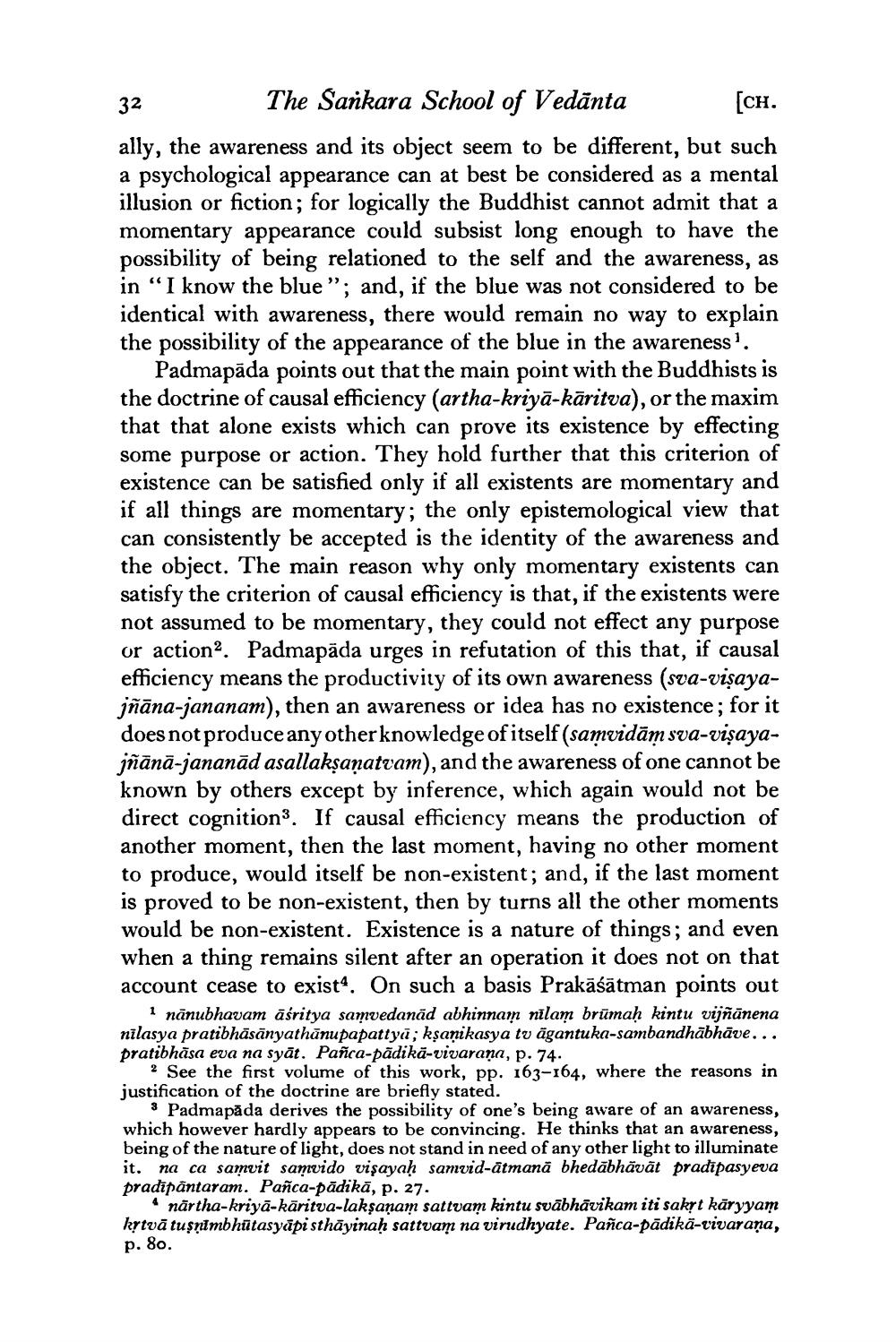________________
32
The Sankara School of Vedanta
[CH.
ally, the awareness and its object seem to be different, but such a psychological appearance can at best be considered as a mental illusion or fiction; for logically the Buddhist cannot admit that a momentary appearance could subsist long enough to have the possibility of being relationed to the self and the awareness, as in "I know the blue"; and, if the blue was not considered to be identical with awareness, there would remain no way to explain the possibility of the appearance of the blue in the awareness1.
Padmapada points out that the main point with the Buddhists is the doctrine of causal efficiency (artha-kriyā-kāritva), or the maxim that that alone exists which can prove its existence by effecting some purpose or action. They hold further that this criterion of existence can be satisfied only if all existents are momentary and if all things are momentary; the only epistemological view that can consistently be accepted is the identity of the awareness and the object. The main reason why only momentary existents can satisfy the criterion of causal efficiency is that, if the existents were not assumed to be momentary, they could not effect any purpose or action2. Padmapada urges in refutation of this that, if causal efficiency means the productivity of its own awareness (sva-viṣayajñāna-jananam), then an awareness or idea has no existence; for it does not produce any other knowledge of itself (samvidām sva-viṣayajñānā-jananād asallakṣaṇatvam), and the awareness of one cannot be known by others except by inference, which again would not be direct cognition3. If causal efficiency means the production of another moment, then the last moment, having no other moment to produce, would itself be non-existent; and, if the last moment is proved to be non-existent, then by turns all the other moments would be non-existent. Existence is a nature of things; and even when a thing remains silent after an operation it does not on that account cease to exist. On such a basis Prakāśātman points out
1 nānubhavam aśritya samvedanad abhinnam nilam brūmaḥ kintu vijñānena nilasya pratibhasanyathānupapattya; kṣanikasya tv agantuka-sambandhābhāve... pratibhasa eva na syat. Pañca-pādikā-vivaraṇa, p. 74.
2 See the first volume of this work, pp. 163-164, where the reasons in justification of the doctrine are briefly stated.
3 Padmapāda derives the possibility of one's being aware of an awareness, which however hardly appears to be convincing. He thinks that an awareness, being of the nature of light, does not stand in need of any other light to illuminate it. na ca samvit samvido vişayaḥ samvid-atmanā bhedābhāvāt pradipasyeva pradipantaram. Pañca-pādikā, p. 27.
närtha-kriya-käritva-lakṣaṇam sattvam kintu svābhāvikam iti sakṛt käryyam kṛtvā tuṣṇīmbhūtasyāpi sthāyinaḥ sattvam na virudhyate. Pañca-pādikā-vivaraṇa, p. 80.




